Top 10 Storyboard Software for Animators in 2025
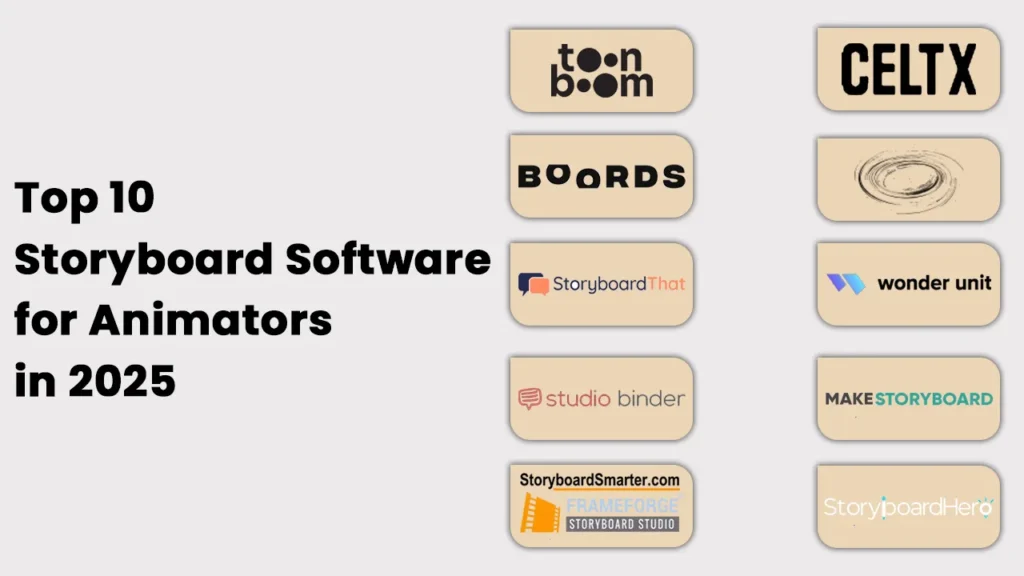
Storyboarding is a crucial step for animators and filmmakers to visualize scenes, plan camera angles, and organize story flow before production. The right storyboard software helps turn ideas into clear visual sequences, streamline collaboration, and save time.
In this blog, we highlight the top 10 storyboard software for animators and filmmakers in 2025, covering features, pricing, advantages, and best use cases to help you choose the perfect tool for your project.
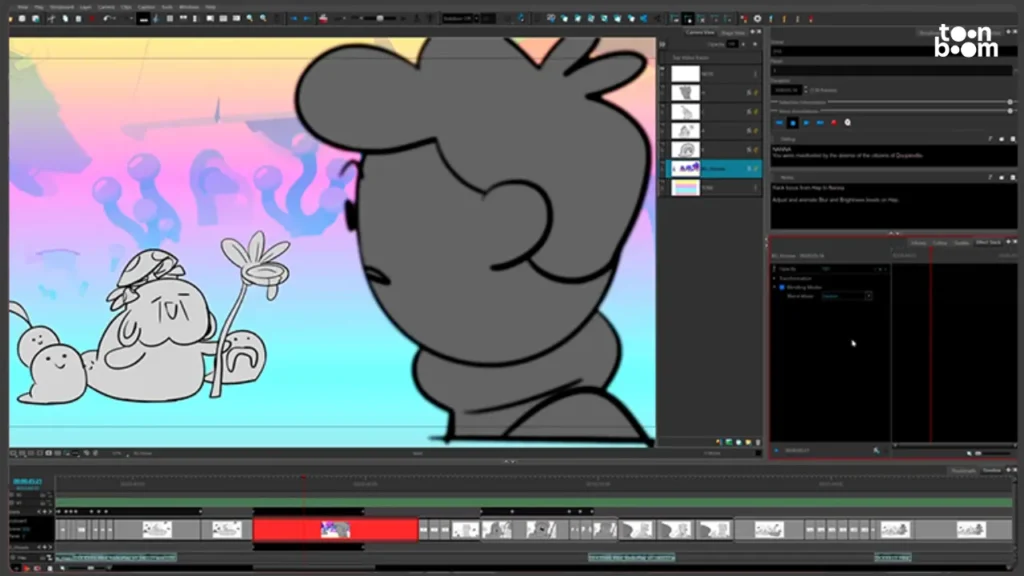
1. Toon Boom Storyboard Pro
Toon Boom Storyboard Pro is widely used in the animation and film industry. Many studios and schools teach it as part of their pipeline. It offers deep control for serious production-level storyboards.
If you plan to work with studios or get hired by them, knowledge of Storyboard Pro is often a plus.
Pricing (USD): ~$75/month or ~$588/year for a desktop subscription.
Advantages:
- Full professional tools: drawing, camera, animatics, 3D integration
- Used by major animation houses (so format compatibility is strong)
- Strong support, many tutorials, and a mature ecosystem
Best For:
- US-based studios, professional animators, feature or episodic animation
- Projects requiring complex camera moves, multi-plane shots
- Teams working in standard industry workflows
Limitations:
- Higher cost for independent artists
- Steep learning curve, especially for those new to storyboard software
- Needs relatively capable hardware
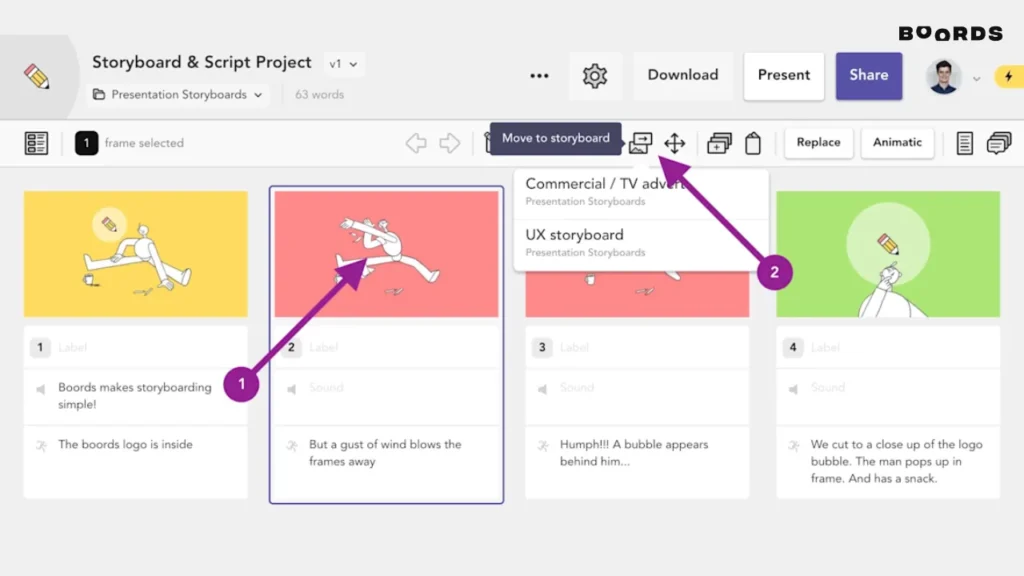
2. Boords
Boords is a popular web-based storyboard tool, often used by video studios, advertising agencies, and motion graphics teams. Its collaboration and feedback features make it ideal for clients who like to comment and review remotely.
It’s especially useful when your clients are spread across states.
Pricing (USD): Standard and Team tiers (e.g., ~$49/month for an individual / ~$99/month for a team) (approximate).
Advantages:
- Very user-friendly UI, minimal learning curve
- Strong feedback, commenting, version history — ideal for client reviews
- Script import, animatic export, and modern web tools
Best For:
- agencies, remote teams, freelancers working with US-based clients
- Motion graphics houses, explainer video shops, small studios
Limitations:
- Requires reliable internet connection
- The free / lower tiers may lack advanced drawing or camera features
- Costs scale with team size
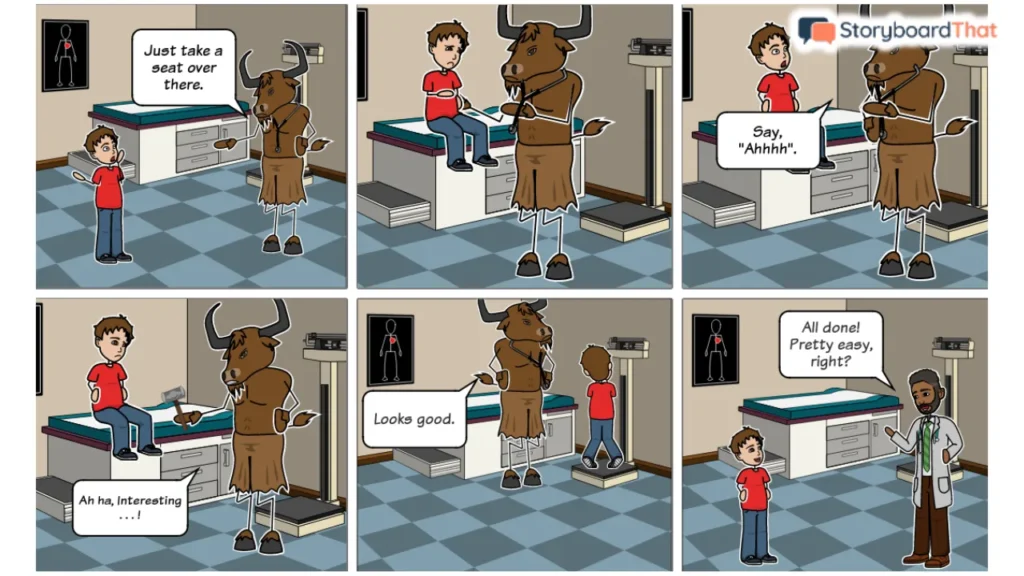
3. Storyboard That
Storyboard That is known in educational and corporate sectors. Many American schools and marketing departments use it for storyboarding classes, training, or explainer story visuals. Its library of assets and ease of use appeal to non-artists or corporate clients in the US.
Pricing (USD): Individual ~ USD $9.99/month, or a yearly subscription. Free version with limitations (watermark, fewer scenes).
Advantages:
- Large library of pre-made characters, props, scenes
- Drag-and-drop ease — no drawing skills needed
- Good for training visuals, marketing storyboards, internal pitches
- Exports in PPT, PDF, image formats
Best For:
- educators, corporate communications, marketing teams
- Beginners or scriptwriters who want to visualize ideas
- Storyboarding for internal training or explainer videos
Limitations:
- Not ideal for full animation or cinematic planning
- Limited camera & motion tools
- The free version has constraints (watermarks, export limits)
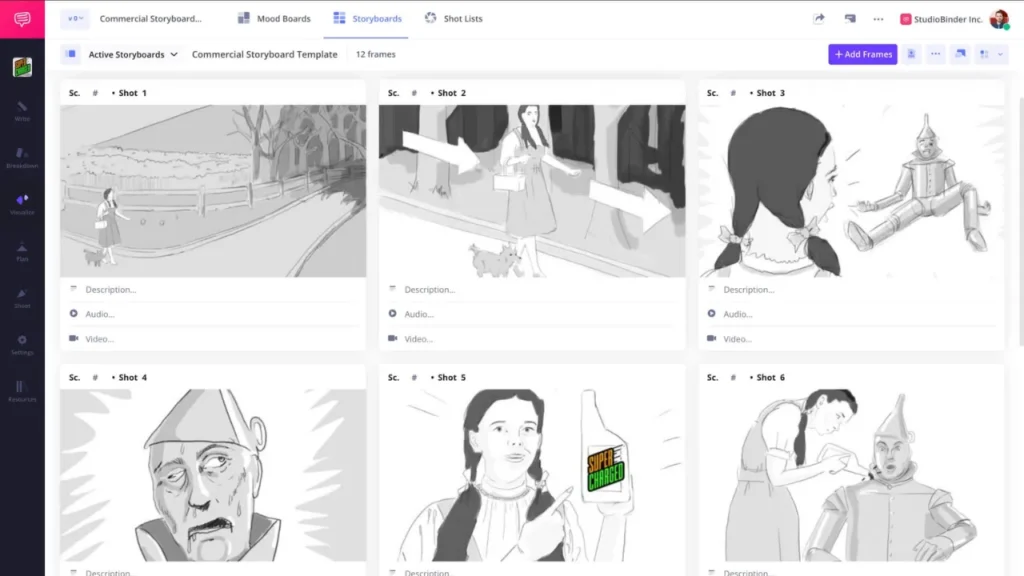
4. StudioBinder
StudioBinder is a production management tool used by many film/TV/animation crews. Its storyboard module is integrated with scripts, call sheets, and shot lists—a plus if you are working in production contexts.
Because of its user base, its features, interface, and pricing are very much geared toward filmmaking standards.
Pricing (USD): They offer a free storyboard creator; full suite plans (~ USD $29+/month and up) for more features.
Advantages:
- Unified production workflow (script ↔ boards ↔ scheduling)
- Collaboration, sharing, version control — useful for teams
- Secure cloud infrastructure tailored to studio workflows
Best For:
- Independent film / animation teams needing integrated tools
- Producers, directors, and teams doing their own preproduction control
- Clients who expect organized, production-grade deliverables
Limitations:
- The storyboard module is less deep than specialized storyboard tools
- Heavy reliance on web connectivity
- Advanced features reserved for higher-tier plans
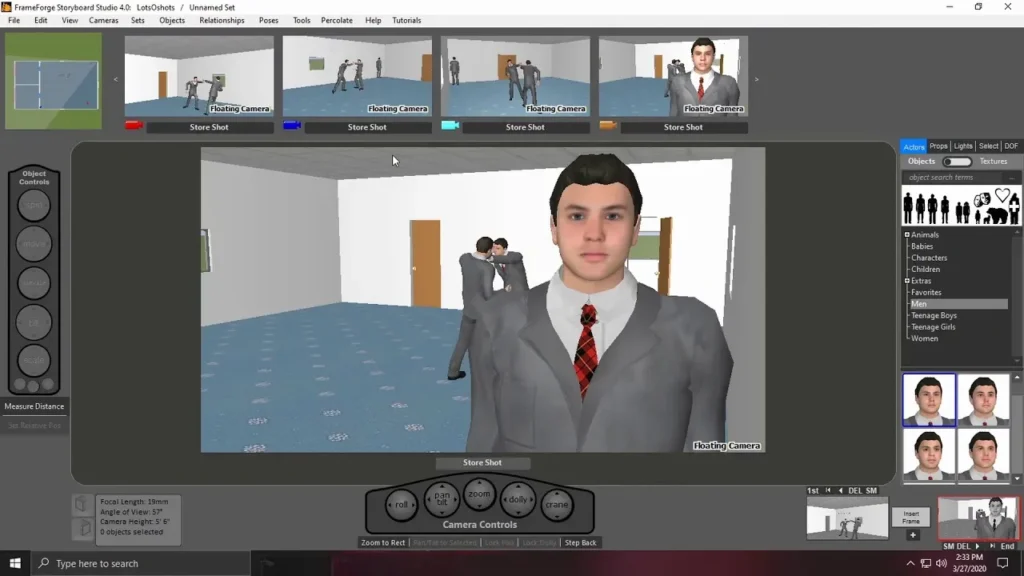
5. FrameForge Storyboard Studio
FrameForge is more specialized, offering 3D set planning and camera simulation, which appeals to productions doing live-action, VFX, or hybrid shoots.
If a production wants to pre-visualize how animation or mixed scenes will work in real sets, FrameForge is a strong choice.
Pricing (USD): Licensing is via custom quotes often purchased by studios and institutions.
Advantages:
- Realistic 3D environments and camera setup simulation
- Lens and angle control helps plan shots accurately before filming
- Bridges the gap between storyboard and on-set planning
Best For:
- Productions needing previsualization, mixed live-action/animation
- Directors, cinematographers, VFX-heavy projects in the movie
- Studios that need control over spatial planning
Limitations:
- Costly for small teams/freelancers
- The learning curve is steep for non-technical users
- Overkill for simpler storyboard needs

6. Celtx
Celtx is well-known in the creative community as a full pre-production solution. Many filmmakers and animation teams use it for scriptwriting, storyboarding, breakdowns, and scheduling.
Its storyboard features are tied into the rest of the pipeline, making it efficient for studios or creators managing complete projects.
Pricing (USD): Plans range (e.g., ~$14.99/month for writer, higher tiers for full production) in the market.
Advantages:
- Full pipeline integration: scripts, storyboards, scheduling, asset management
- Cloud collaboration, commenting, versioning are useful for distributed teams
- Exports and data flows suitable for production needs
Best For:
- Small- to mid-sized studios needing one platform
- Animation and film teams who handle both writing and visual planning
- Projects where script and board synchronization is needed
Limitations:
- The storyboard module is less powerful than dedicated tools
- Need internet access for collaboration
- Advanced features locked in higher subscription tiers
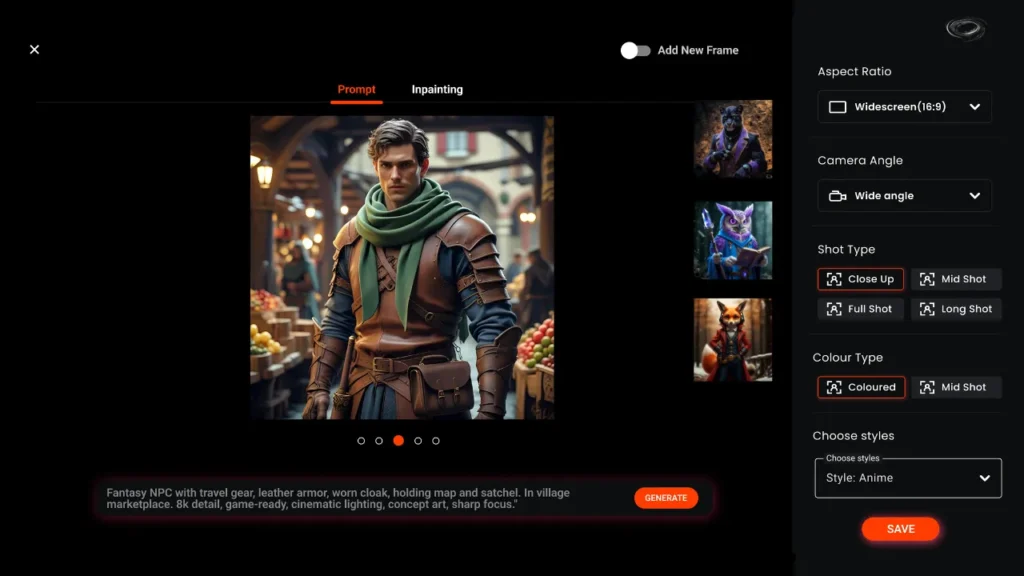
7. Murphy Storyboard Video Maker
Murphy is an AI-powered storyboard tool that helps you turn a script or prompt into visual boards quickly. It’s web-based, and thus accessible to animators across the US without worrying about installation or platform differences.
Because of its AI assist, it’s great for early ideation or when you need to pitch something fast to US clients or creative teams.
Pricing (USD / US market): Free plan available. Premium / paid tiers for advanced features (HD exports, team collaboration, extra templates) — check their US site for latest.
Advantages:
- AI-assisted generation of scenes from script or ideas
- Drag-and-drop board editing for quick adjustments
- Real-time collaboration and sharing (great for distributed US-based teams)
- Exports in multiple formats (PDF, animatic, etc.)
Best For:
- Freelancers, indie animators, agencies in the US needing fast story ideation
- Remote teams working across states or coasts
- Pitching to US clients, ad agencies, or educational projects
Limitations:
- AI outputs may lack artistic detail or specific style control
- The free tier likely restricts resolution or number of frames
- Not as powerful in camera moves or compositional control as dedicated software
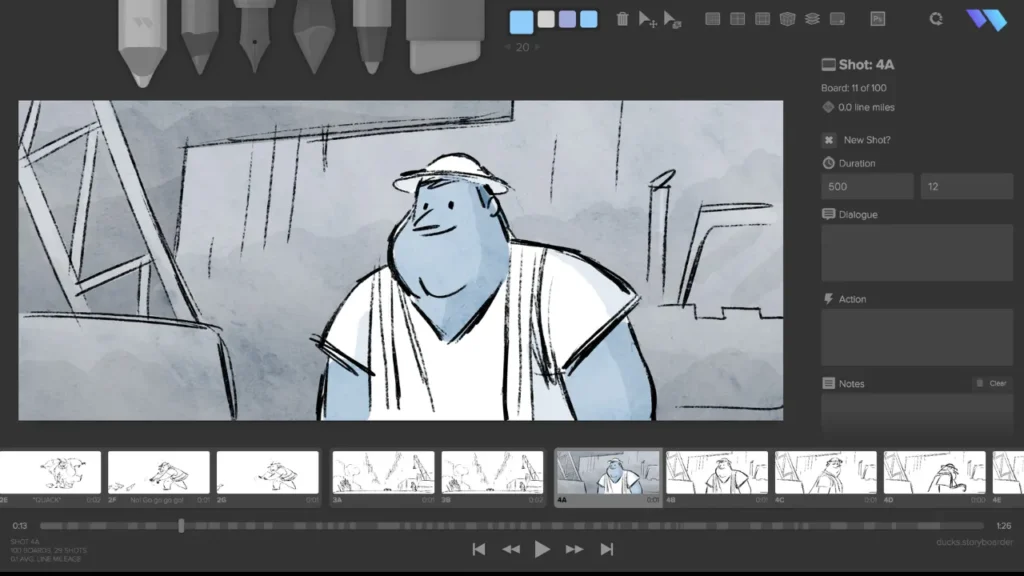
8. Storyboarder (by Wonder Unit)
Storyboarder is a free, open-source tool that’s used by many independent animators, students, and small studios. It’s lightweight and ideal for sketching frames and getting visual flow quickly.
Because it’s local (desktop) and open-source, users don’t worry about subscription costs or restrictions.
Pricing (USD): Free (open-source).
Advantages:
- No cost, no subscription
- Clean, fast tool for sketching and animatics
- Works offline (good for travel and fieldwork in the US)
- Export to formats usable in editing / animation pipelines
Best For:
- Indie animators, students, low-budget projects
- Quick concept iterations before moving to detailed tools
- Artists who prefer local control over cloud tools
Limitations:
- Lacks built-in collaboration or cloud sync in base version
- No 3D or advanced camera planning
- Requires external tools for project management or team workflows

9. MakeStoryboard
MakeStoryboard is a web-based storyboard tool that presents its pricing and features directly in USD, making it. Many freelancers and small teams use it for quick visual planning and lightweight workflows.
makestoryboard.com
It’s simple, accessible, and integrates basic collaboration and export tools.
Pricing (USD): ~$12/month (Individual plan, with 10 storyboards)
makestoryboard.com
Team plan: ~$48/month for teams (with seats, versioning, etc.)
makestoryboard.com
Advantages:
- Transparent USD pricing (friendly to users)
- Easy-to-use UI, quick sketch or image-based storyboarding
- Collaboration features (comments, sharing, access controls)
- Export to PDF, image, share link — useful for client review
Best For:
- freelancers, independent animators, small studios
- Projects where speed, simplicity, and portability matter
- Clients or collaborators in the who expect web delivery
Limitations:
- Doesn’t have advanced camera motion, 3D tools
- Free or lower plans limit number of storyboards or storage
- Web-only — offline use is limited
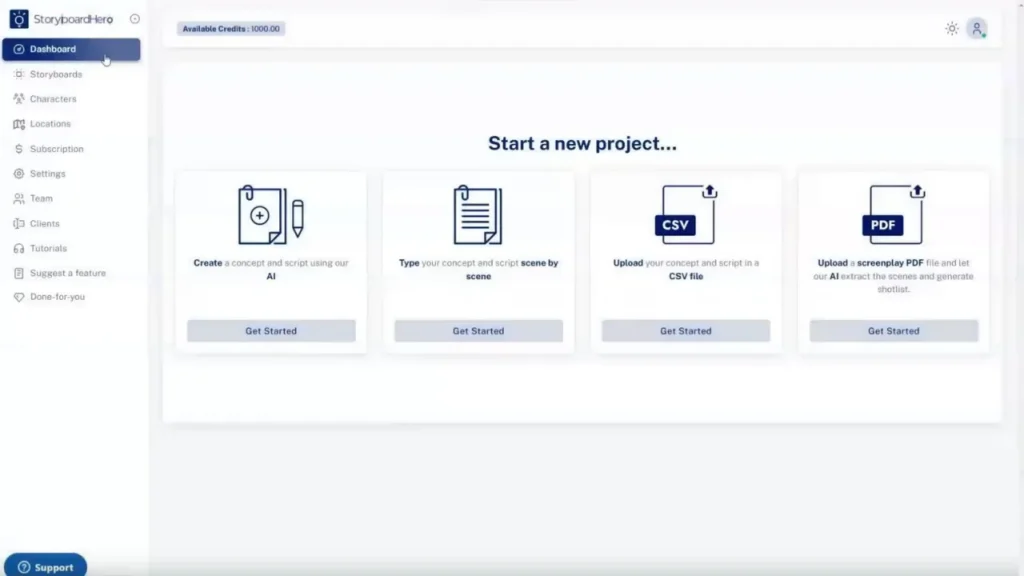
10. StoryboardHero (AI Storyboard Generator)
StoryboardHero is a newer AI-driven tool gaining traction in the market, especially among digital content creators. It helps animate concepts by generating visual boards automatically from scripts or prompts — useful for quickly ideating in competitive content markets.
Because it’s AI-first, it’s targeted at creators wanting to fast-track ideation before final art is made.
Pricing (USD):
- Solo: ~$19/month
- Starter: ~$49/month (5 seats)
- Advanced: ~$199/month (10 seats)
- Enterprise: custom pricing
Advantages:
- AI-generated visual boards from text/scripts
- Unlimited frames in higher plans
- Built-in collaboration and export for US-scale workflows
- Speeds up early visual development, good for content pace
Best For:
- digital creators, agencies, animation startups embracing AI
- Rapid pitch development for clients
- Teams wanting a fast conceptual pipeline
Limitations:
- AI artwork may lack stylistic consistency or detail
- Custom styles often need manual rework
- Cost rises quickly with team scale

What Is Storyboarding and Why It Matters for Animators
Storyboarding is the visual blueprint of an animation or film project. It’s a sequence of drawings or digital frames that outline how each scene will look, how the characters will move, and how the story will unfold. For animators, storyboarding acts as the foundation of the creative process — allowing teams to visualize ideas before production begins.
Using a digital storyboard helps identify pacing issues, refine camera angles, and communicate vision clearly between directors, artists, and clients. By laying out the story visually, animators can save significant time, and ensure that every frame supports the story’s emotional flow. avoid costly revisions,
How to Choose the Best Storyboard Software for Your Project
Choosing the best storyboard software depends on your creative needs, team size, and production goals. The right tool can simplify visual planning, enhance collaboration, and bring your ideas to life efficiently. Here’s how to make the right choice for your project:
1. Define Your Purpose and Workflow
Before selecting any storyboard tool, identify the main goal of your project.
- For animated films or series, choose professional tools like Toon Boom Storyboard Pro or FrameForge, which provide advanced camera and animatic features.
- For marketing videos, explainer content, or educational projects, simpler platforms like Murphy or Boords offer faster setup and AI-assisted workflows.
- If you’re teaching or learning storyboarding, tools like Storyboard That or Storyboarder are perfect for beginners.
Tip: If your project involves multiple steps (scriptwriting, shot planning, scheduling), opt for integrated platforms like Celtx or StudioBinder.
2. Consider Collaboration & Cloud Access
Modern production often requires teamwork and feedback from different collaborators. Cloud-based storyboard software helps streamline communication and version control.
- Look for real-time collaboration, commenting, and revision tracking.
- Choose tools that allow easy sharing and exporting in formats like PDF, MP4, or online links.
- Ensure your software keeps your data secure and easily accessible.
Tip: Cloud tools save time by allowing feedback without repeated file exchanges.
3. Evaluate Pricing and Budget
Storyboard tools come in a range of pricing models — from free open-source software to high-end production suites.
- Free or low-cost options: Murphy, Storyboarder, MakeStoryboard.
- Mid-range tools: Boords, Celtx, Storyboard That.
- Professional-grade options: Toon Boom Storyboard Pro, FrameForge.
Tip: Start with a free trial to understand the workflow and upgrade as your projects grow.
4. Check the Learning Curve & Support
If you’re new to storyboarding, select software with a simple interface and helpful tutorials.
- Beginner-friendly: Boords, Storyboard That, Storyboarder.
- Advanced: Toon Boom, FrameForge.
Also consider whether the software offers responsive technical support, user communities, and learning resources.
Tip: Smooth onboarding helps you focus more on creativity than on figuring out the tool
5. Look for Integration & Export Options
The best storyboard software fits naturally into your creative pipeline. Look for:
- Multiple export options — PDF, PNG, MOV, or animatic formats.
- Compatibility with tools like After Effects, Premiere Pro, or DaVinci Resolve.
- AI-assisted features that automate scenes or visuals (Murphy, StoryboardHero).
Tip: The more compatible the software is with your workflow, the faster your production process becomes.
6. Test Before You Buy
Always test your shortlisted tools before committing. Most platforms offer free demos or trial versions.
Try using them for a small project and evaluate:
- Ease of use and layout
- Drawing and editing flexibility
- Export quality
- Collaboration features
Tip: Real testing reveals how intuitive and reliable the tool truly is.
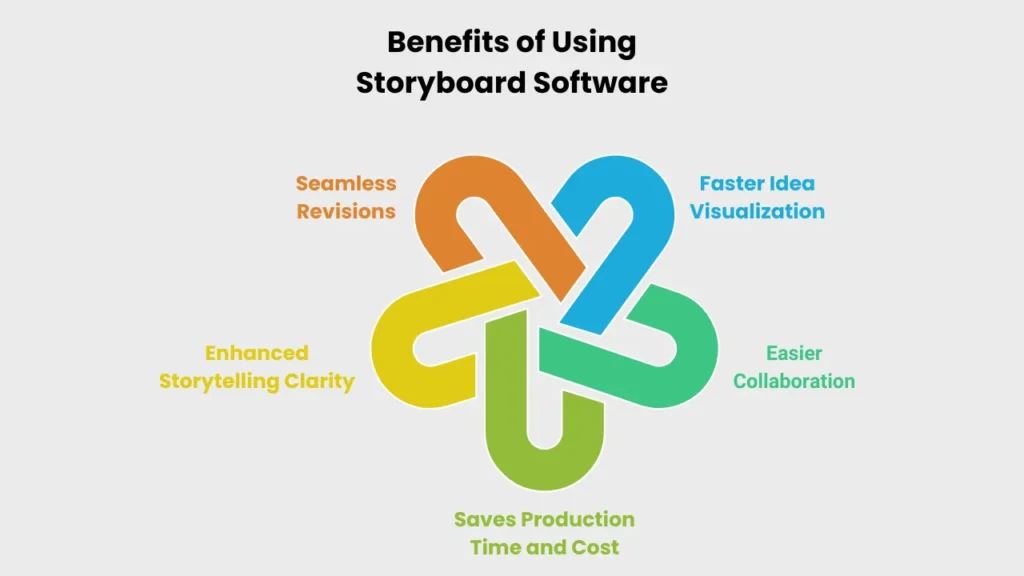
Benefits of Using Storyboard Software
Modern storyboard software has transformed the way animators plan and execute projects. Instead of relying on hand-drawn sketches or scattered files, digital tools provide a structured, collaborative, and efficient workflow.
Key Benefits:
- Faster Idea Visualization: Instantly sketch, organize, and rearrange frames to test visual concepts and story flow.
- Easier Collaboration: Cloud-based platforms allow multiple artists, directors, and writers to review and edit storyboards in real time.
- Saves Production Time and Cost: Early visualization prevents mistakes during animation and reduces unnecessary re-rendering or reshoots.
- Enhanced Storytelling Clarity: Built-in features like camera movements, transitions, and sound integration make your story more dynamic and cinematic.
- Seamless Revisions: Digital storyboards can be quickly adjusted as creative ideas evolve, keeping production flexible and efficient.
Whether you’re creating a short animation, a feature film, or a motion graphic, using storyboard software ensures that your creative vision is clear, consistent, and production-ready.

How Storyboard Software Helps in Animation Pre-Production
Storyboard software plays a vital role in the animation pre-production process, bridging the gap between a written script and the final animated sequence. Before animators bring characters to life; every movement, shot, and transition is planned visually using a storyboard. Digital storyboard tools make this stage faster, clearer, and more collaborative.
During pre-production, storyboards act as the creative roadmap for the entire animation project. Artists can experiment with camera angles, timing, and scene transitions to ensure every frame supports the story’s flow. With modern storyboard software, you can easily add dialogues, sound cues, and visual effects references — allowing teams to visualize how the animation will look and feel long before production starts.
By using digital tools instead of traditional paper sketches, teams save hours on revisions, reduce communication gaps, and maintain a consistent visual direction. It also ensures that the creative, technical, and production departments all work in sync — avoiding costly delays during the actual animation phase.
Key Advantages in Pre-Production:
- Visual Planning: Quickly translate script ideas into visual frames that guide the animation process.
- Efficient Workflow: Integrate storyboards with animation software for smoother transitions between stages.
- Improved Collaboration: Directors, animators, and editors can all review and comment within the same platform.
- Error Reduction: Identify pacing issues, missing shots, or inconsistencies early in the pipeline.
- Budget Control: Early visualization helps prevent unnecessary rework and saves both time and money.
Storyboard software not only enhances creativity but also ensures production efficiency, making it an essential part of every professional animator’s toolkit.
Frequently Asked Questions (FAQs)
1. What is a storyboard tool, and why do animators use it?
A storyboard tool helps animators and filmmakers visually organize scenes before production. It allows you to sketch frames, define camera angles, and map out story flow digitally. By using storyboard software, animators can easily adjust pacing, add dialogues, and plan each shot — saving both time and effort during production.
2. What are the best storyboard tools for beginners?
For beginners, platforms like Storyboard That, Boords, and Murphy are great starting points. These storyboard tools come with drag-and-drop features, pre-made templates, and cloud-based sharing options that simplify the creative process — perfect for learning visual storytelling without needing advanced design skills.
3. Can AI help create storyboards automatically?
Yes! Many modern storyboard tools now integrate AI-generated storyboard features that use scripts or prompts to automatically create visual sequences. Tools like Murphy and Videoinu leverage AI to generate frames, suggest camera angles, and even design character poses — speeding up the pre-production process dramatically.
4. What is an AI character maker, and how is it in storyboarding?
An AI character maker allows animators to instantly design unique, style-consistent characters based on text inputs or image prompts. These AI tools can then be imported into storyboard software, helping you visualize scenes faster without spending hours drawing each character manually.
5. What are the advantages of using AI-generated storyboards?
AI-generated storyboards help creators save time by automatically turning ideas or scripts into visual sequences. They also improve creative brainstorming by suggesting layouts, character expressions, and shot compositions. This combination of automation and creativity lets animators focus more on storytelling and less on repetitive design work.
6. Is there any free storyboard tool available for animators?
Yes! Tools like Storyboarder (by Wonder Unit), Canva, and Storyboard That offer free plans with basic features such as templates, drag-and-drop elements, and easy export options. These are ideal for students, indie animators, or creators working on smaller projects.
7. How do I choose the best storyboard software for my project?
When choosing a storyboard tool, consider your animation style, team size, and workflow needs. For professional studios, advanced tools like Toon Boom Storyboard Pro offer timeline control, camera tracking, and animatic creation. For individuals or small teams, AI-powered tools like Murphy provide faster results and simplified collaboration.
8. Can I combine AI character makers with storyboard software?
Absolutely. Many storyboard tools now support integration with AI character generators and design platforms. You can create custom AI characters, export them as images, and use them directly within your storyboard scenes — making the process highly efficient and visually cohesive.
9. Are AI-generated storyboards accurate for professional animation use?
AI-generated storyboards are improving rapidly. While they’re perfect for visual ideation and draft planning, professionals often refine AI results manually to ensure storytelling precision and stylistic accuracy. Think of AI as your creative assistant — not a replacement for artistic vision.
10. What’s the future of storyboard tools with AI integration?
The future of storyboard tools lies in AI-driven automation and real-time collaboration. Expect software to handle character animation previews, dialogue syncing, and scene visualization automatically. With AI character makers, voice tools, and auto-layout features, storyboarding will become faster, smarter, and more intuitive than ever.
Final Thoughts
Choosing the right storyboard software is about finding the balance between features, budget, and workflow efficiency. Whether you’re a solo animator, part of a creative agency, or managing a full production team, the ideal tool should simplify your planning process while keeping your creative vision intact.
A well-chosen storyboard tool doesn’t just visualize ideas — it builds the foundation for an organized, efficient, and successful production.